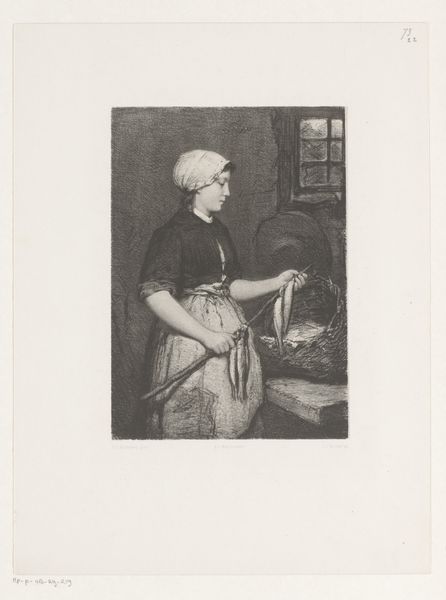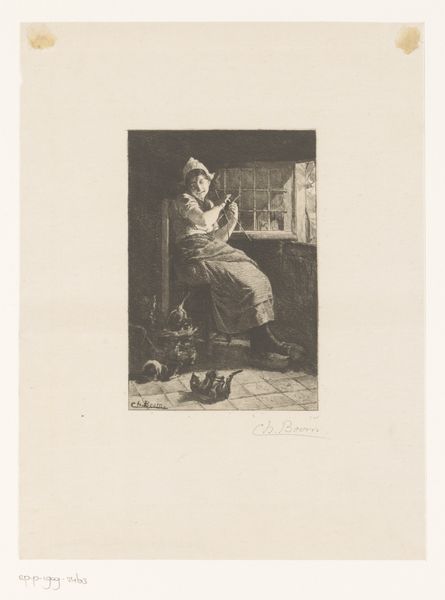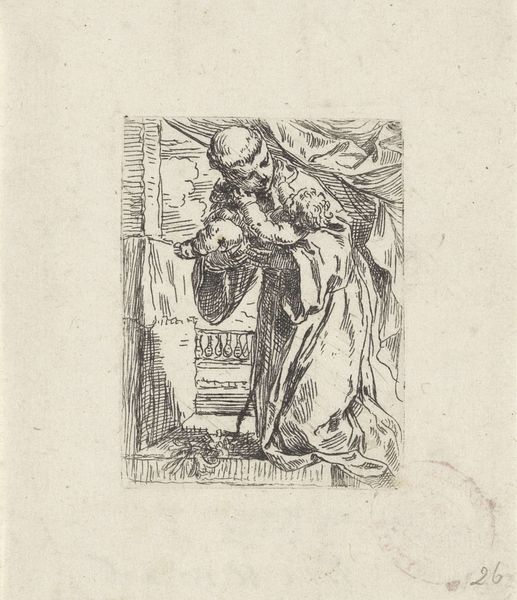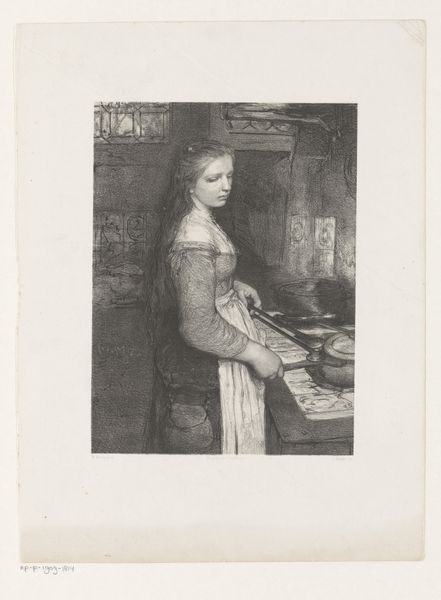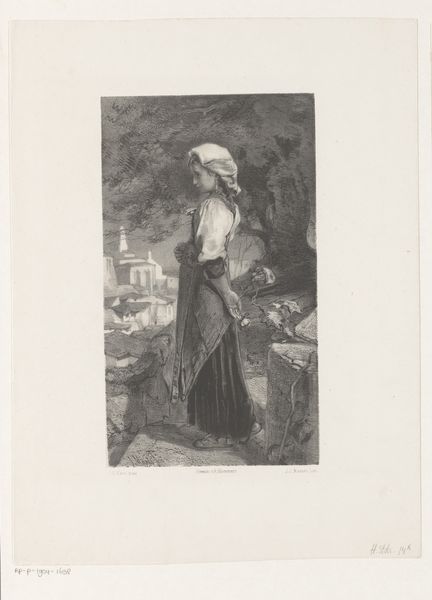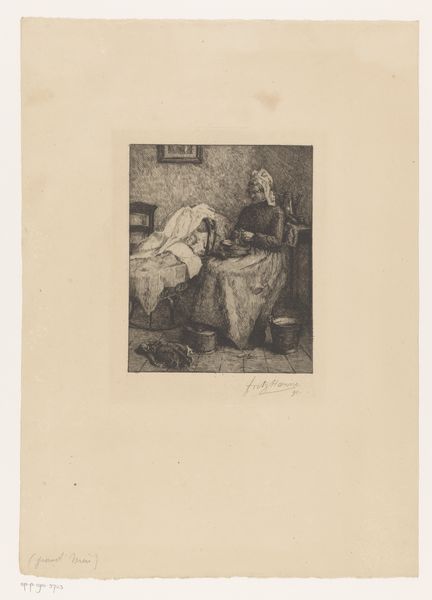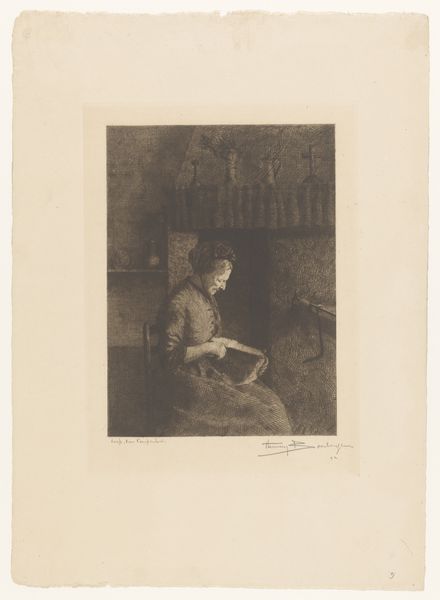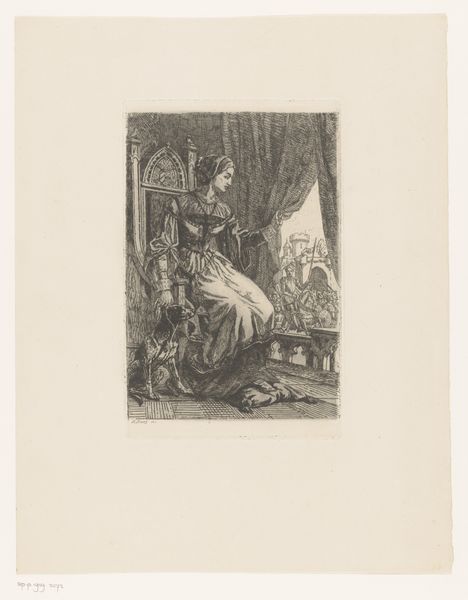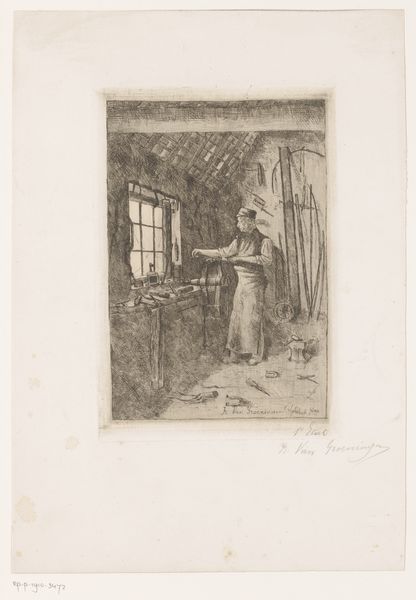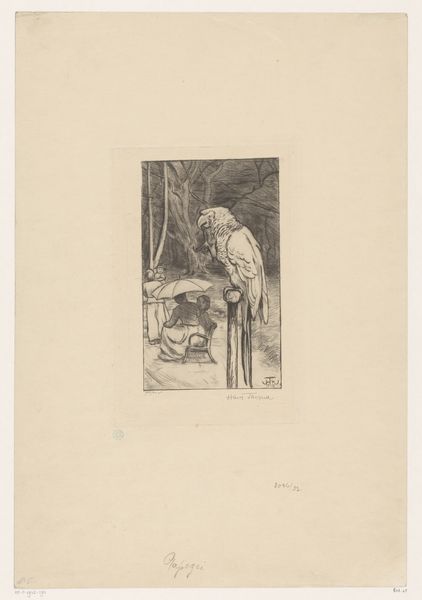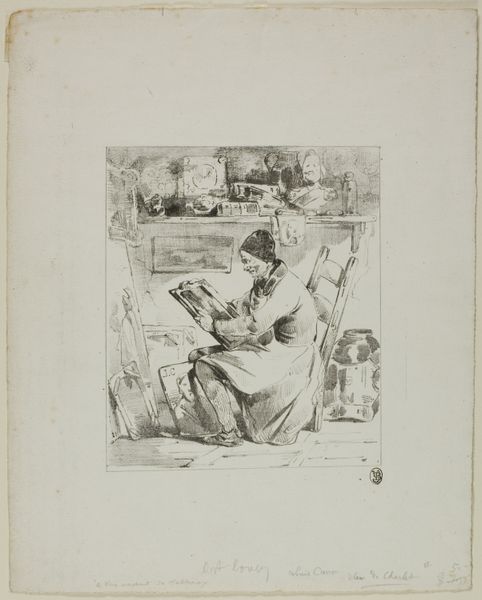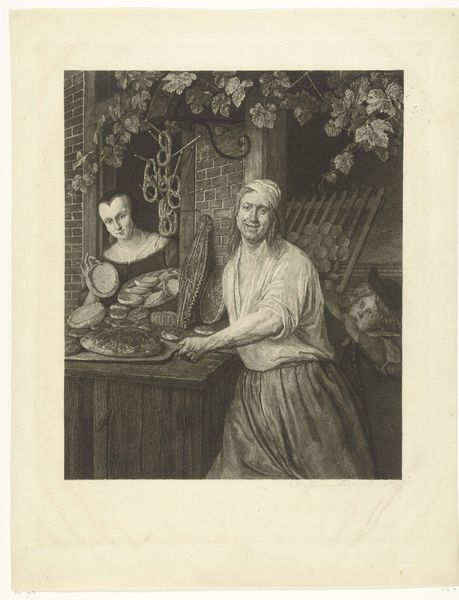
drawing, pencil
#
portrait
#
drawing
#
figuration
#
pencil drawing
#
pencil
#
genre-painting
#
academic-art
#
realism
Dimensions: height 350 mm, width 270 mm
Copyright: Rijks Museum: Open Domain
Editor: So, this is "Meisje aan de pomp," or "Girl at the Pump," a pencil drawing by Jan Mesker, created before 1890. It’s currently housed in the Rijksmuseum. There is a melancholy mood about her; she almost looks trapped. How would you approach analyzing this piece? Curator: Notice the formal arrangement. The girl is centrally placed, a compositional decision which commands immediate attention to the subject. Observe the chiaroscuro – the strategic use of light and shadow. What does the contrast achieve? Editor: I see what you mean! It adds depth and volume, but also perhaps emphasizes the darkness of her situation, or her inner feelings? It does seem significant, particularly on her face. What else stands out? Curator: Consider the vertical and horizontal lines. The verticals – the pump, the fence behind her – create a sense of constraint. Juxtapose that with the horizontality of her posture. Does this pose express compliance, a bowing-down to the environment, and the social expectation imposed on her? What is the function of the circular element, and repetition of circular shapes within the composition? Editor: I notice those shapes and lines a lot more now. She's surrounded! There's a circular form right by her in the lower left; her arms make a circular movement… even the bars of the cage for the birds has those rounded tops. She's almost swallowed up by circles. That is… haunting. Curator: Exactly. It is through such formal observations and the structural analysis of composition, line and form that one can decode such narrative strategies, yes? Editor: Definitely. Looking at the art like that helps create some clues to solving its message. I have never thought of it that way, I think. Curator: Good! Keep using such tools, and let the composition reveal itself to you!
Comments
No comments
Be the first to comment and join the conversation on the ultimate creative platform.
